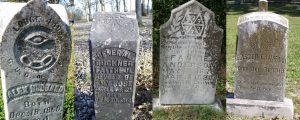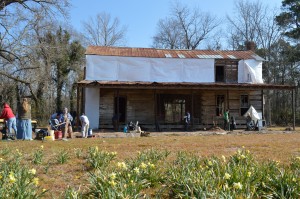Lakeport Legacies · July 27 · Ironclads, Cotton and Corn: The Civil War in the Mississippi Delta · Jim Woodrick (Mississippi Department of Archives and History)
Lakeport Legacies · July 27 · Ironclads, Cotton and Corn: The Civil War in the Mississippi Delta · Jim Woodrick (Mississippi Department of Archives and History)
Today, many people associate the Mississippi Delta as the birthplace of the Blues. Tourists from across the globe visit the Delta each year to, as one travel writer put it, “soak up the raw authenticity” of the region. Steeped in agriculture (and specially cotton), the Mississippi Delta is indeed a unique place and the stories of Blues legends and Civil Rights heroes deserve to told and retold. But there is another legacy of the Mississippi Delta which is often overlooked, and that is the important role the region played in the Civil War. Seen by many historians as a sideshow to more significant campaigns, the reality is that the Delta was vital to Confederate interests and was the target of repeated Union attempts to utilize the region’s waterways as an avenue of invasion.
A native of Meridian, Mississippi, Jim Woodrick serves as Director of the Historic Preservation Division at the Mississippi Department of Archives and History, where he worked for a number of years as the Civil War Sites Historian. In that capacity, he managed the Mississippi Civil War Trails program, participated in a number of battlefield and campaign studies with the National Park Service, and worked closely with the Civil War Trust and the American Battlefield Protection Program to identify Civil War battlefield properties in Mississippi for acquisition and preservation. Jim is a graduate of Millsaps College in Jackson, Mississippi. He is the author of The Civil War Siege of Jackson Mississippi, published by The History Press (2016).
Register
Lakeport Legacies is a monthly history talk held on one of the last Thursdays at the Lakeport Plantation during the spring and summer. Each month a topic from the Delta region is featured. The event is free and open to the public. The Lakeport Plantation is an Arkansas State University Heritage Site. Constructed ca. 1859, Lakeport is one of Arkansas’s premier historic structures and still retains many of its original finishes and architectural details. Open to the public since 2007, Lakeport researches and interprets the people and cultures that shaped plantation life in the Mississippi River Delta, focusing on the Antebellum, Civil War, and Reconstruction periods. Arkansas Heritage Sites at Arkansas State University develops and operates historic properties of regional and national significance in the Arkansas Delta. ASU’s Heritage Sites include the Hemingway-Pfeiffer Museum and Educational Center, Southern Tenant Farmers Museum, Lakeport Plantation, the Historic Dyess Colony: Boyhood Home of Johnny Cash, and the Arkansas State University Museum.






